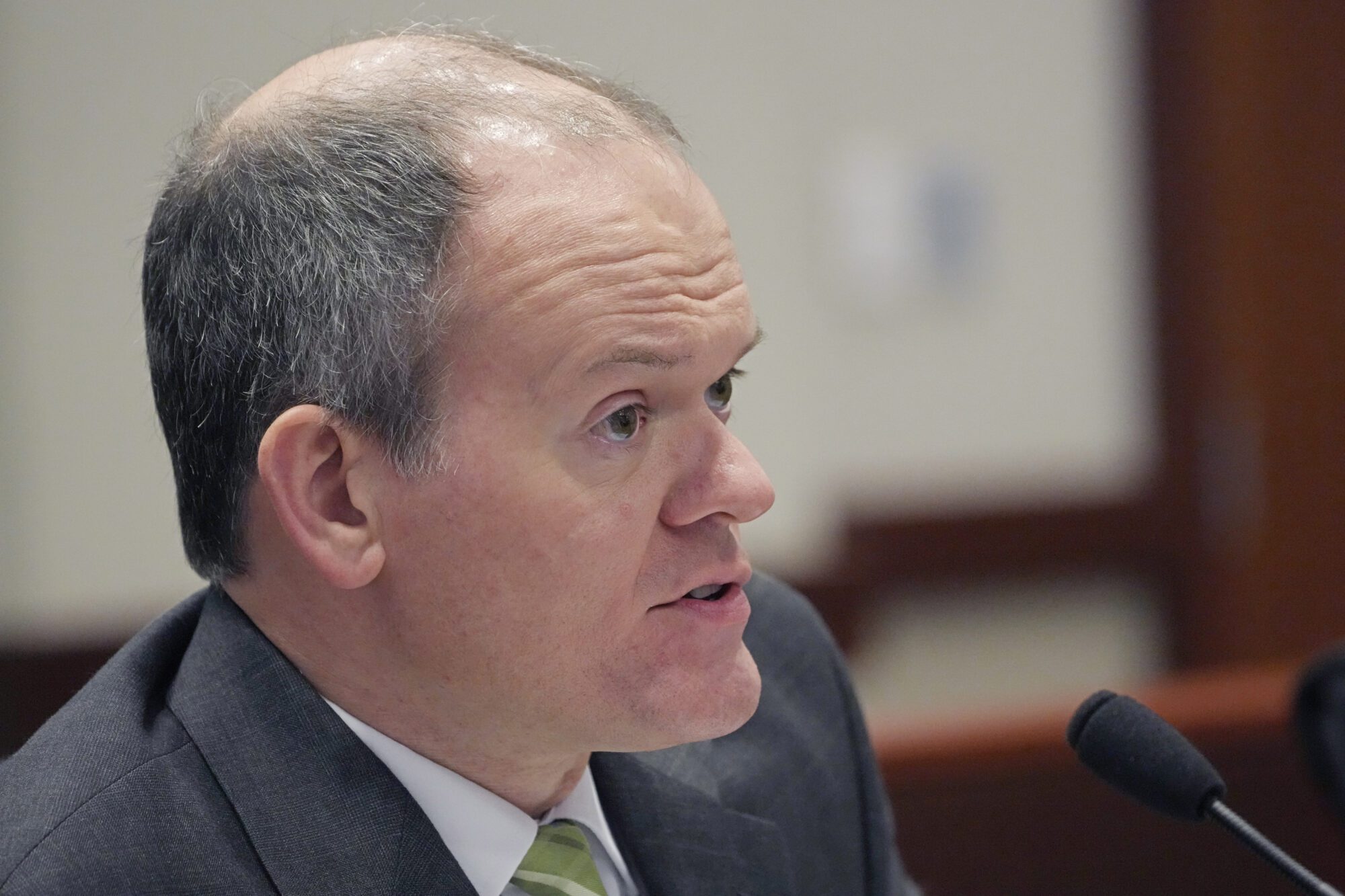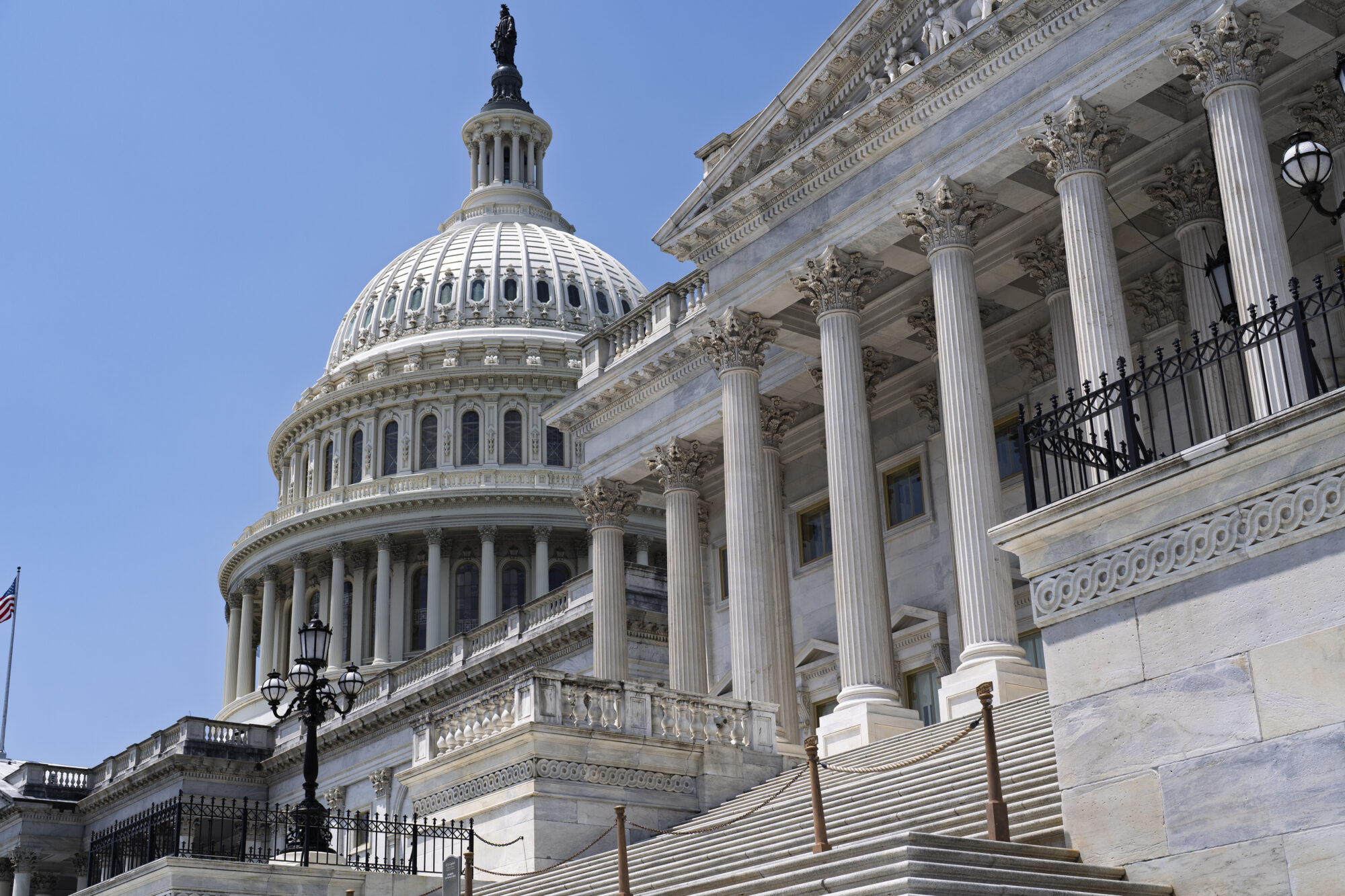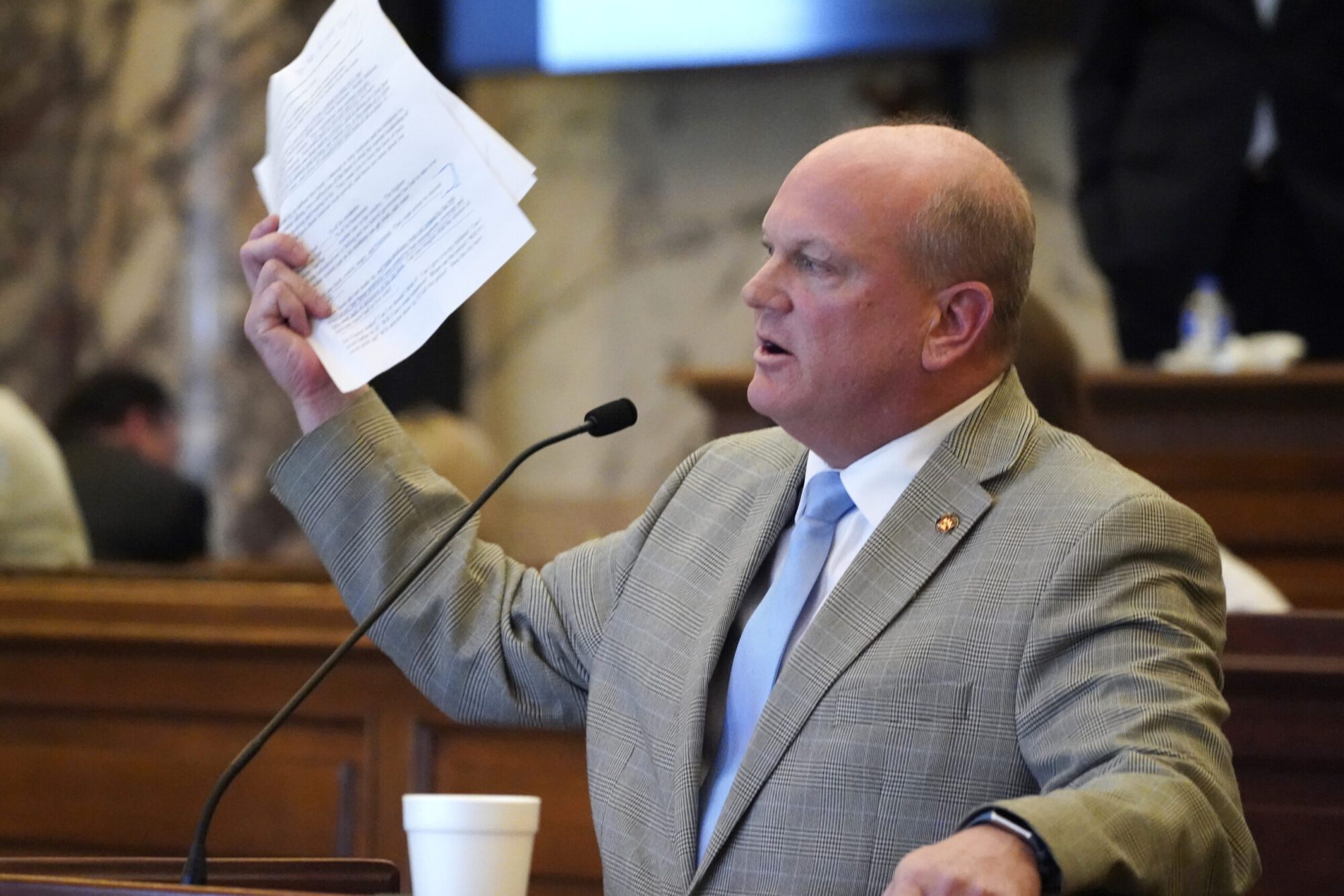
Mississippi State Economist Corey Miller discusses the state's revenue estimates during a meeting of the Joint Legislative Budget Committee, Wednesday, Nov. 15, 2023, in Jackson, Miss. (AP Photo/Rogelio V. Solis)
Mississippi State Economist Corey Miller wants to know what happened to the 42,000 workers that left the labor force since February of 2020.
State Economist Corey Miller told attendees at a Stennis Capitol Press luncheon on Monday that an economic downturn is anticipated for Mississippi come the last quarter of 2024 and through 2025. Yet, his concerns were focused on a continued low percentage of labor force participation in the Magnolia State.
At the luncheon, Miller shared data on Mississippi’s labor force participation rate and where it stands in relation to the rest of the country.
“Labor force participation in Mississippi is an issue that received attention from researchers, members of the media, and state officials in recent years. The reason for that is because Mississippi has one of the lowest labor force participation rates in the country,” said Miller.
According to the U.S. Bureau of Labor Statistics, the state typically ranks 43rd in the U.S. on an annual average for labor force participation. Since 2013, Mississippi has been in the 49th position, just above West Virginia.
Data from 2022 shows that 54.9% of the state’s possible labor force was engaged in work, compared to the nation’s rate of 62.2%.
Mississippi’s most recent labor force participation rate in October 2023 was shown at 53.9%, the lowest among all states in the U.S. Since 1976, there were only three other months that had a lower rate and they were all related to the pandemic in April, May, and June of 2020.
“While low labor force participation is a long-standing issue in Mississippi, today I wanted to focus on the recent downward trend in the rate. Frankly, my opinion of 53.9% is startlingly low given our current economic conditions,” said Miller. “Recent data seemed to indicate that a lack of population growth in Mississippi is keeping that rate from increasing or pushing it down. If that is true, focusing on the lack of population growth in Mississippi is more paramount than it’s been.”
However, the way to improve that rate is unclear. Miller said possible answers are compounded with an aging population and declining birth rates.
Miller pointed out access to childcare being a primary barrier for families, particularly women who are either choosing or forced to stay home because of rising costs.
When questioned as to whether or not access to healthcare or expanding Medicaid would make a major difference in the retention or addition of workers, Miller said it could be related. However, he added that there was no data to indicate workers were leaving Mississippi for states that had expanded Medicaid. In fact, Miller said those who are marginally attached to the labor force, or workers at lower wages in and out of the market, are often not the ones in a position to move away.
“I have seen research that talks about Medicaid expansion, has not had much effect on labor force participation in other states that have expanded,” said Miller. This data is less than 10 years old.
What is Labor Force Participation?
Labor force participation is calculated by taking the sum of the employed and unemployed and dividing it by the civilian non-institutionalized population (anyone 16 or older and is not in the military, hospitalized, or in prison.)
If someone moves from unemployed to employed, or vice versa, but the population rate doesn’t change, then the labor force participation rate doesn’t either. Data collected regarding labor participation is based on public surveys.
Miller said these numbers increase concern because labor force participation is directly linked to lower gross domestic product, tax revenue, and larger federal outlays. It is also more common for individuals who are not working to enroll in federal programs.
The state economist estimates that if Mississippi had roughly the same labor force participation rate of the U.S., the state’s real GDP would have been 10% larger, or $10 billion more than it is currently.
Miller said further research has identified educational attainment, disability, race, and the prison population as direct factors in the labor force participation rate. He went on to add that Mississippi has a particularly large amount of residents who claim disability, compared to the rest of the country.
While Mississippi and national rates are similar, Miller said there is a question as to why the rate in Mississippi has recovered so much less following the pandemic.
“The labor force participation rate in both Mississippi and the U.S. was lower in October of this year than in February of 2020 because the change in the labor force was less than the increase in population,” said Miller. “But the rate in Mississippi recovered less than the rate in the U.S. because the labor force decreased in Mississippi while the U.S. labor force increased.”
Miller said that begs the question as to what happened to the 42,000 workers that left the labor force since February of 2020. He said he has continued to look at Census data in an attempt to find a potential answer.
Miller speculates that some of causes can be attributed to aging and the retirement of the Baby Boomer generation along with the shift in the composition of the population. He noted that Louisiana has had similar changes in population, but has not experienced the decrease in population.









